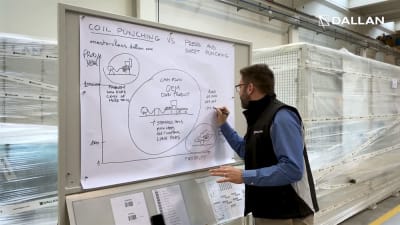Dallan: coil-fed punching machines or sheet-fed presses and punching machines?

Dallan, an expert in precision roll forming machines and equipment for processing sheet metal products, has recently published an interesting article on the differences between coil-fed punching machines and sheet-fed presses and punching machines.
Andrea Dallan, CEO of the company, explains the continuum spacing from maximum productivity and minimum flexibility to maximum flexibility and minimum productivity.
At the extreme where maximum productivity lies, we find the coil-fed press and pitch die system. This is an excellent production model, efficient and suitable for mass-producing millions of pieces per year. Obviously, it also has its disadvantages. First of all, the dies’ high cost; then, the very slow modification and production changeover times. The "time to market", that is the time that elapses between the idea of a piece and the actual sale, is very long: we are talking about months or even years. Moreover, the construction of prototypes or pre-series is very challenging. The main advantages, however, are very high productivity and maximum optimization of material usage.
At the opposite end, that of maximum flexibility, we find sheet-fed punching machines, a perfect solution for those who produce a few hundred pieces a year. This system, too, does not come without its problems. The first is raw material waste: working from standard sheets, it often exceeds 20% of the total surface. The second is the low productivity, due to the continuous need to load the machine when the sheet is exhausted. In addition, there is the time needed for tool changes.
And in between? Here, production ranges from thousands to hundreds of thousands of parts per year. In this area, the best solution is coil-fed punching with standard tools and a thick turret. In this way, material usage is optimized to its maximum, especially when using a coil that matches the exact width of the final product. The 20% saving in raw material instantly results in positive cash flow. Since there is no need for sheet loading and unloading or tool changeover time, the entire process is much faster: production times for paneling can range from 6 to 24 seconds. The "time to market" measurement unit here is hours, not months. The scalability of this system allows producing over 500,000 pieces per year.
Read the full article >>>
Or watch the video:
- Machines for sheet metal •
- Other machines for sheet metal processing
